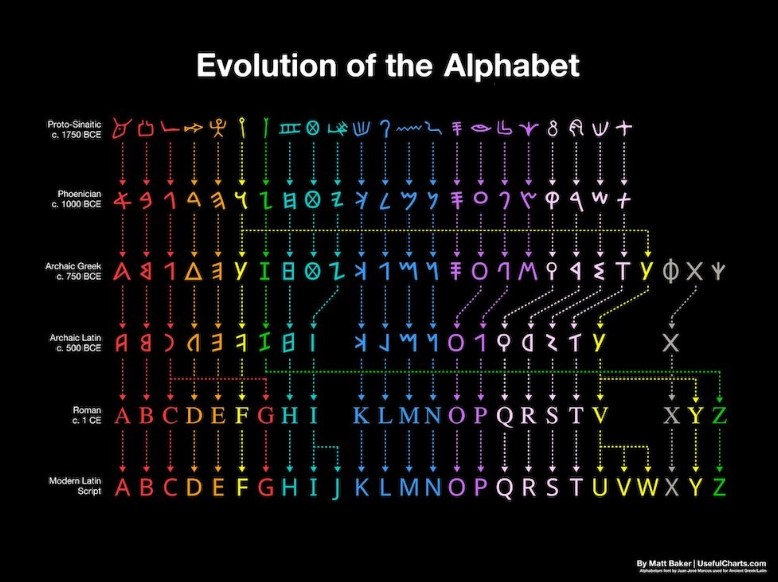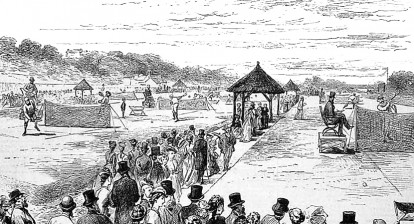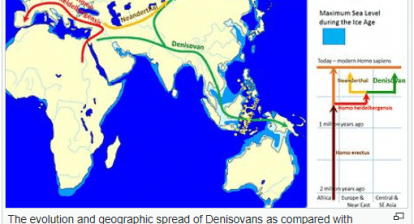In a small West African village, a man named Momolu Duwalu Bukele had a compelling dream. A stranger approached him with a sacred book and then taught him how to write by tracing a stick on the ground. “Look!” said the spectral visitor. “These signs stand for sounds and meanings in your language.”
Bukele, who had never learned to read or write, found that after waking he could no longer recall the precise signs the stranger revealed to him. Even so, he gathered the male members of his family together to reverse engineer the concept of writing. Working through the day and into the following night, the men devised a system of 200 symbols, each standing for a word or a syllable of their native Vai language. For millennia, varieties of the Vai language had been passed down from parents to children—but before this moment no speaker had ever recorded a single word in writing.
This took place in about 1833 in a region that would soon become the independent nation of Liberia. Vai, one of about 30 Indigenous languages of Liberia, has nearly 200,000 speakers today in the Cape Mount region that borders Sierra Leone.
Within just a few generations, Bukele’s invention was being used for penning letters, engraving jewelry, drafting carpentry plans, keeping personal diaries, and managing accounts. Vai people manufactured their own ink from crushed berries and even built schools for teaching the new system. The script was so successful that other Indigenous groups in the region were inspired to create their own; since the 1830s, at least 27 new scripts have been invented for West African languages.
Today the Vai writing system is taught at the University of Liberia and is even popular among students who are not themselves ethnically Vai. The Vai script has been included in the Unicode Standard, which means Vai speakers with smartphones can now exchange text messages in the script.
THE EVOLUTION OF WRITING
As a linguistic anthropologist, I am fascinated by the Vai discovery—and especially how the script has become critical for understanding the evolution of writing itself.
It’s not the first time in recent history that a new writing system has been invented from scratch. In the 1820s, the nonliterate polymath Sequoyah created a special script for his native Cherokee language, and similar indigenous inventions have emerged elsewhere in the world on the margins of expanding colonies. But the evolution of Vai has been especially well-documented, making it a useful case study for researchers of writing.
In a recently published paper, my colleagues and I show that over the past two centuries the letter shapes in the Vai script have evolved via “compression”—a process by which written signs are gradually reproduced with less visual detail while conveying the same amount of linguistic information.
The theory that written signs compress over time has a long history with several versions. For instance, early Chinese philosophers imagined that their characters were modeled on living things or elemental forces until legendary rulers reduced the images to outlines. European Enlightenment thinkers, meanwhile, linked the presumed trajectory toward simplification with emerging theories of societal progress. In their estimation, the decreasing complexity of writing systems gave rise to clarity and intellectual advancement, an attitude linked to social evolutionist ideologies of racial hierarchy.
Archaeologists, for their part, have long understood the letters of the Roman alphabet originated in recognizable pictures of real things. The ox’s head 𓃾 of Egyptian hieroglyphics was reduced to a geometric outline ∀ and eventually rotated to become the capital letter A. The detailed image of a human eye 𓁹 complete with lids and a retina may well have simplified into the letter O.

This chart depicts the evolution of the modern Latin alphabet from the earliest traces of alphabetic writing dating to the Middle Bronze Age according to archaeological findings. Matt Baker/Usefulcharts
But history’s first written documents are fragmentary, making it hard for archaeologists to reconstruct the trial-and-error interactions that must have unfolded, perhaps on perishable materials. In China and Central America, the very earliest traces of true writing have been lost altogether or are yet to be unearthed. Researchers must make imaginative leaps to vault over these gaps in the archaeological record, picturing anonymous doodlers amid piles of disintegrating drafts.
In the early 20th century, British author Rudyard Kipling did just this when he imagined the origins of writing in “How the First Letter Was Written,” from his Just So story collection for children. The story recounts how Taffy, an ingenious cave-dwelling girl, learned to communicate with others from afar.
Taffy first begins by drawing complex illustrations of her intended message. These drawings are comically misinterpreted by a neighboring community and nearly provoke a tribal war. On her next attempt, Taffy targets language itself, drawing simpler pictures on birchbark to gesture at the sound values of words rather than their meanings. To evoke a hissing sound, for instance, she depicts a snake curled into the form of an S. To capture the roundness of a surprised mouth exclaiming “Oh!,” she sketches an O. Over a short space of time, Taffy redraws the pictures “scratchier and scratchier” until they are abstract letter shapes with only a faint memory of the natural things that first inspired them.
Taffy’s first insight—that graphic symbols can model spoken language—is not quite as obvious as it may seem. Unlike stone tools, pottery, or fire-making, the special technology of writing has been invented only four times in human history, at least as far as researchers are aware. It emerged twice in the Middle East about 5,000 years ago, once in China (1200 B.C.), and most recently in Central America (about 600 B.C.).
Taffy’s second insight is that sign shapes don’t need to resemble anything familiar. In fact, they’re easier to reproduce when reduced to bare bones. As it happens, many early written signs do seem to follow Taffy’s sequence: They start out depicting people, animals, or objects, then later these iconic pictures become simpler, more uniform, and more recognizable as what people today call “writing.”
WHAT VAI TELLS US
While Kipling’s tales reflect a still-popular consensus on how writing evolves, the theory is hard to test without access to a complete-enough record of dated inscriptions.
The Vai script turns out to be an excellent natural experiment for probing the “Taffy effect” from a different angle. Given the substantial archive of Vai documents, and the fact that it was regularly sampled by visitors from the 1830s onward, researchers today have access to a nearly year-by-year record of the writing system’s entire evolutionary history.
I worked with a team of researchers to dig deeper into this archive. Our big question was: Did the letter forms of the Vai script undergo a predictable process of change, from relatively elaborate to relatively simple? And, more generally, what can the Vai case tell us about the evolutionary dynamics of writing?
We found that a number of early Vai letters are in fact depictions of real things: a pregnant woman, an enslaved man, a human ear, a dying tree, shot pellets, coins, and water. While striking to examine, however, these were isolated examples. Most early Vai letters, it turned out, were abstract compositions of lines with no detectable referents in the world of things.
Our study applied computational tools to measure the precise visual complexity of each of the 200 signs at every stage of the script’s development.
We already assumed that picture-based signs with lots of visual complexity are intuitively useful to language learners because they serve as a memory prompt. What’s more surprising is that it doesn’t seem to matter whether these signs are pictures of anything at all. They just need to be visually complex.
We suspect that this is because graphic complexity has the effect of increasing the contrast between signs and minimizing ambiguity. After all, when people acquire literacy for the first time, usually as children, they find it hard to distinguish between similar letters, such as b and d or p and q in the case of the Roman alphabet.
But as soon as Vai learners mastered their system, the same complexity got in the way of efficient communication. Why labor over the details of an accurate portrait when a rough sketch will suffice?
Sure enough, our study found over a very short time Vai letters become progressively simpler, more systematic, and more similar to one another. In fact, the most complex letters simplified to the greatest extent. Those that were already simple barely budged.
A RAPID EVOLUTION
Cultural evolutionary theorists study the role of human cognition in shaping culture. For example, researchers have shown how limitations on memory and learning can introduce helpful “refinements” to cultural products, be they stories, pictures, or writing systems. When an item is transmitted, learners retain the most salient characteristics while features that are harder to recall or reproduce tend to flatten or fade away.
We think this pattern of simplification can be observed for ancient writing systems as well but over much longer time scales than seen with the case of Vai. One reason for the slower pace of change may come down to the vastly different historical contexts where these writing systems emerged. In the ancient Middle East, those who practiced writing were part of an educated elite who likely could not yet imagine the wider applications of writing that we see today.
Vai people in the 19th century, on the other hand, already knew that writing embodied spoken language, that it could be used for a range of useful—or nefarious—tasks, and that it had powerful social consequences. Bukele had witnessed, for instance, how writing had been deployed to manage the transatlantic trade in enslaved humans.
Others outside of his community also saw the power of the Vai script. Missionaries from Europe who lived in the region were impressed by how well it modeled the syllabically organized sound structure of the Vai language, making it easier to learn than the Roman alphabet. From its humble origins the script would later be applied to Vai translations of the Bible, the Quran, and even sections of Homer’s Iliad.
And in the United States, meanwhile, where the system of slavery was under intense scrutiny, abolitionists touted the invention of the Vai system as evidence of innate African intellect and capacity for self-determination. Shortly after Bukele made his discovery, the nation of Liberia was proclaimed as a resettlement project for newly emancipated African Americans.
This broader context probably helped speed along the process of compression. Unlike ancient peoples, early Vai script adopters recognized the social, cultural, and political importance of writing and applied the new script straightaway to a wide array of practical concerns. From shopping lists to high literature, their constant use gave it regular opportunities to change and adapt quickly. Every time Vai writers dashed off a note or wrote out a homework exercise, they introduced tiny personal idiosyncrasies, some of which were assimilated by readers and reproduced, while others failed to catch on.
The bottom line: Written letter shapes evolve over time, but so do the purposes and technologies of writing itself. The continued endurance of the Vai script of Liberia is a monument to the brilliance of its first creators who retrieved writing from a dream, then let it free to trace its own successful path.
This work first appeared on SAPIENS under a CC BY-ND 4.0 license By Piers Kelly. Read the original here.







